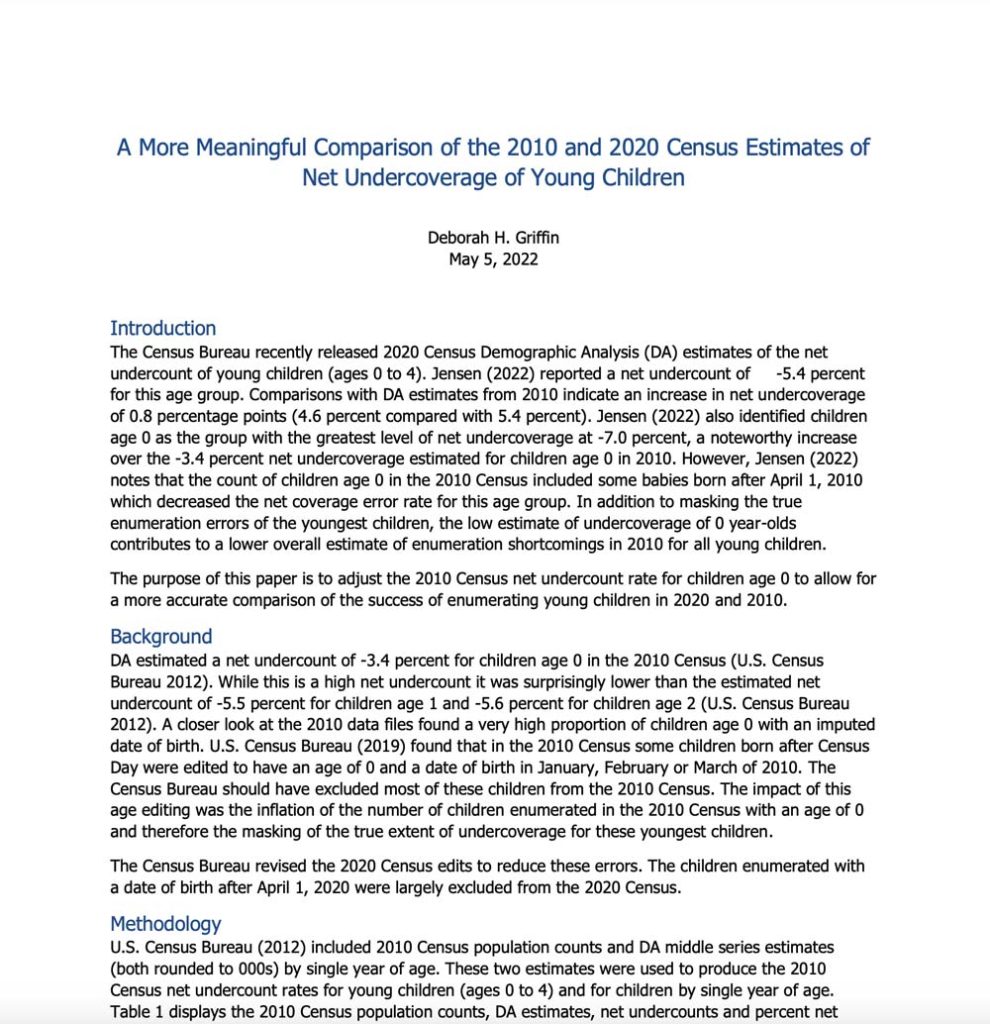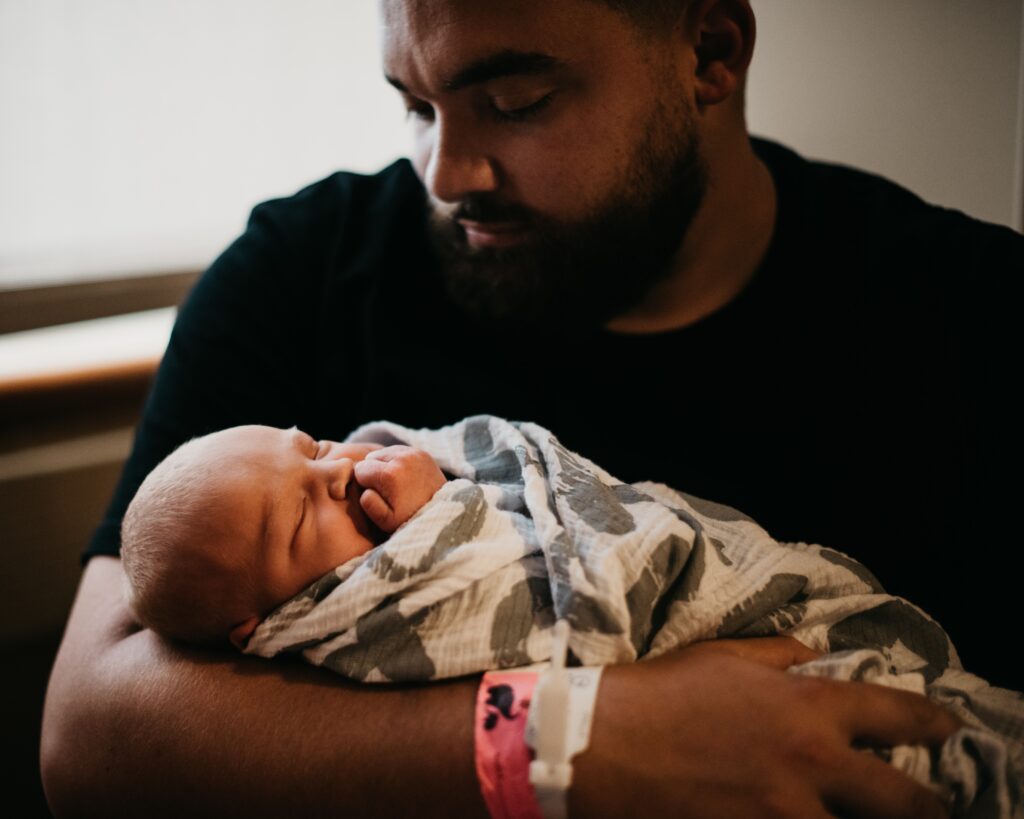The Census Bureau recently released 2020 Census Demographic Analysis (DA) estimates of the net undercount of young children (ages 0 to 4). Jensen (2022) reported a net undercount of -5.4 percent for this age group. Comparisons with DA estimates from 2010 indicate an increase in net undercoverage of 0.8 percentage points (4.6 percent compared with 5.4 percent). Jensen (2022) also identified children age 0 as the group with the greatest level of net undercoverage at -7.0 percent, a noteworthy increase over the -3.4 percent net undercoverage estimated for children age 0 in 2010. However, Jensen (2022) notes that the count of children age 0 in the 2010 Census included some babies born after April 1, 2010 which decreased the net coverage error rate for this age group.
In addition to masking the true enumeration errors of the youngest children, the low estimate of undercoverage of 0 year-olds contributes to a lower overall estimate of enumeration shortcomings in 2010 for all young children. The purpose of this paper is to adjust the 2010 Census net undercount rate for children age 0 to allow for a more accurate comparison of the success of enumerating young children in 2020 and 2010.









